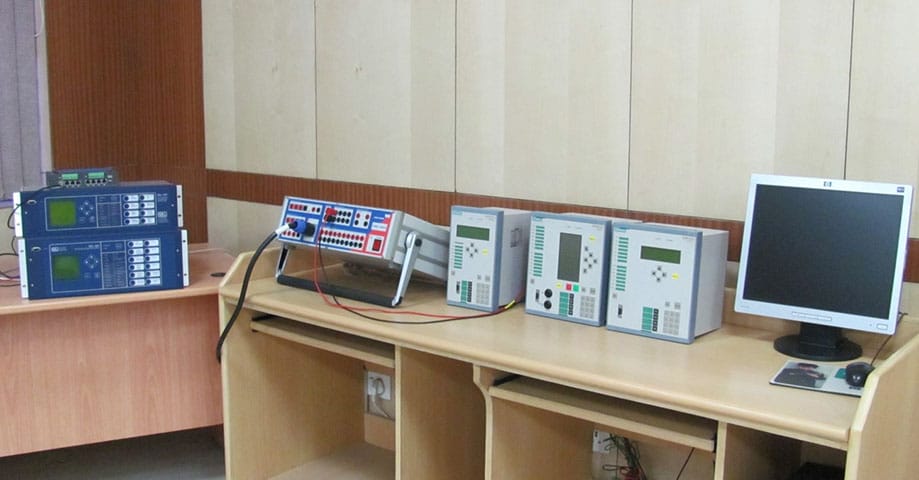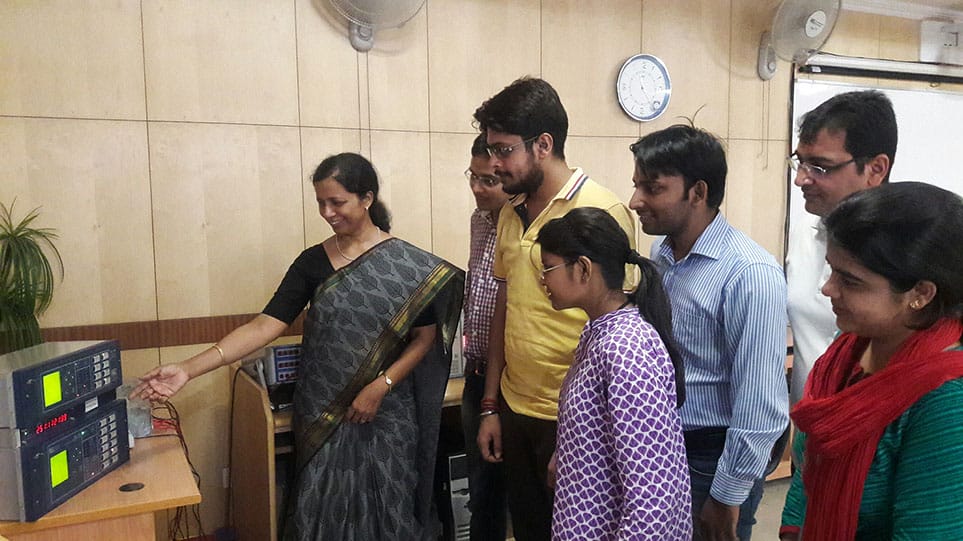SCADA & Substation Automation Laboratories
Substation Automation System
Electric substations are the most critical pieces of infrastructure in electric power systems, as they monitor and control the widely spread transmission network. The automation of substations is occurring across the globe at a rapid pace, in order to equip utilities to make use of available resources in the most efficient manner. The development of IEDs, the implementation and acceptance of standards, and migration to interoperable, open systems have all led to the widespread automation of substations. Automating a new substation is relatively easy; new IEDs for performing different functions can be implemented and integrated at the design stage itself. But as stated earlier, automating existing substations poses a serious challenge. Several alternatives are available, depending on the availability of equipment and software in the substation and the financial constraints. In order to integrate the IEDs with the existing system, it is necessary for the engineers to be well versed in both the old and new technologies. With the development of the IEC 61850 communication standard, utilities were forced to explore various options with regard to retrofitting and expanding existing infrastructure that has not fully completed its operational life in order to get the maximum benefit ts of the new technology at the minimum cost. The SCADA laboratory has been assisting students to enhance their practical knowledge and application of SCADA systems. In 2008, the need for an SA laboratory to equip the students with additional knowledge about relay IEDs, communication protocols, and the retrofit tting of substation equipment was clear, and its implementation was begun. The various modules of the SA laboratory were designed in order to demonstrate the integration of the latest technology available with existing substation infrastructure. These modules help the students understand IEC 61850, interoperability, and the substation migration process.
Hardware Design of the SA Laboratory
The SA lab was designed with the utmost care so as to incorporate all the components required to demonstrate the capabilities of IEDs and the IEC 61850 standard and to perform advanced research in the field. The protection relay IEDs are the core of the substation automation system. They perform a number of different functions. A variety of relay IEDs has been deployed in the design of the lab in order to bring in all aspects of system protection. The relay IEDs are of the differential, distance, and bay controller types; they were sourced from different vendors and communicate using different protocols. SA uses various communication protocols, such as Modbus, IEC 60870-103, IEC 60870-5-101, and IEC 61850. Hence a protocol converter was included in the design of the laboratory to integrate IEDs using different protocols. Since the relay IEDs need to be tested for numerous fault conditions to demonstrate capabilities and set parameters, a secondary test device that generates a variety of fault conditions as required is an integral part of the design of the lab. As the synchronization of the relay at a single location and also with relays at different locations is done with a global positioning system (GPS) clock in the power system, a GPS clock was incorporated in the design of the laboratory, for better understanding of the actual system.



